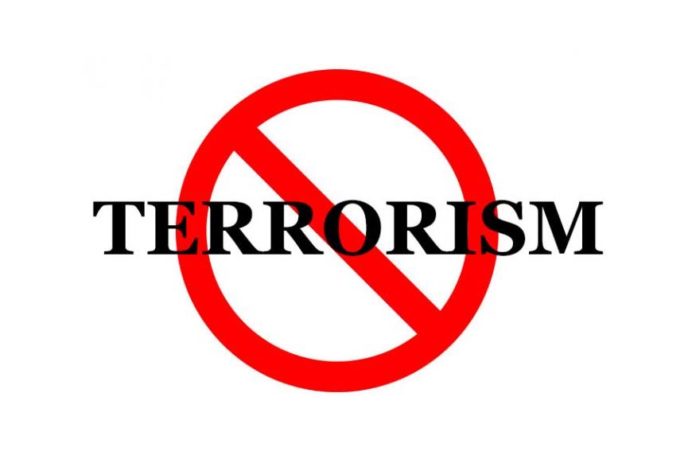Home Articles Is People’s Response to Terrorism More Dangerous than Terrorism Itself?
Disclaimer: The Eqbal Ahmad Centre for Public Education (EACPE) encourages critical and independent thinking and believes in a free expression of one’s opinion. However, the views expressed in contributed articles are solely those of their respective authors and do not necessarily reflect the position or policy of the EACPE.
Terrorism may be understood as the use of violence to further a political or socio-religious cause. The terrorists’ strategic aims may include political/ social change through influencing public opinion, disrupt the government in power, avenge a wrong or generate a public reaction to legitimize their stand. Even though we tend to hear a lot more about acts of terrorism in contemporary times, there are many examples of terrorism throughout history. More recently, nationalist movements against colonial occupations resorted to terrorist methods in favour of their demands for freedom and global publicity for their cause. With the tremendous media coverage available now, the stakes related with terrorist acts have spiralled to higher proportions as shown by the recent attacks in Sri Lanka, New Zealand, Afghanistan, Nigeria and Mali among many more.
Whereas prevention and neutralizing of terrorist operations is an important concern, visualizing and managing people’s responses to terrorist episodes is extremely important too. Terrorist attacks are sudden and shocking and take people unawares, causing a host of reactions based on various social, cultural, political and personal factors. Such attacks generate an ambient fear psychosis across the country where they takes place; they also generates trauma at the individual level, which is in direct proportion to the closeness of the individual to the attack in terms of distance or association with the objects of terrorist activity. This intense experience of death and impending threat is bound to leave a print on collective consciousness for times to come. Besides these generalized reactions to episodes of terrorism, people’s reactions will be decided by multiple other variables including ethnicity, culture, affiliation to political or religious parties and role of leadership and media. Individual determinants of the type and intensity of reactions to terrorist episodes are socio-economic status, educational levels, intelligence and awareness levels, family, upbringing, personal agendas and levels of frustration, insecurity and angst. Many informed people who have balanced outlooks are able to carry on with their routine lives and political views without being too rattled. But people from lower socio-economic strata, low educational levels, and low intelligence and awareness levels generally suffer from frustration and insecurity and carry an unresolved angst. This angst does not find justified outlets and is quick to be deflected towards any available target. These people are likely to be emotionally swayed through political jingoism and rousing feelings of panic and disunity by demagogic leaders. Those who are socially disadvantaged and live as members of a marginal minority already host high anxiety levels which are easily aggravated by malicious hate mongering by such leaders and a manipulated media.
The intense experience of death and impending threat is bound to leave a print on collective consciousness for times to come.
Grief and outrage for the loss of victims through death and the psychological and material damage to the affected families are the common reactions in most of the population. But an outrage against a terror incident is not only an expression of fear, grief and outrage against that one incident. It conjures up demons of a myriad other repressed insecurities and smouldering resentments from the deeper layers of the subconscious. For some, a deep rooted angst against being marginalized assimilates and surfaces as a hostile expression which finds validity in a collectively accepted cause. For others, an intense reaction against such an incident provides an outlet for camouflaged hate feelings against a certain ethnic, religious or national group. Indian culture has a highly collectivistic orientation. Strong family, religious and community ties influence people’s reactions to a terrorist crisis, magnifying the intensity manifold than if it were an individual reaction. Given the closeness between community members, the fear and insecurity aroused by such incidents is infectious and spreads fast, bringing about a reassertion of group identity and heightened allegiance within the group to foster a sense of comforting solidarity. Whereas this may result in increased mutual support within a certain group, it causes an enhanced feeling of disconnect with the opposing group, leading to unhealthy and dangerous social polarization.
A demagogic and exploitative leadership is likely to exploit these heightened insecurities and ambient social fear by further underlining the divide between groups and communities to serve their own political agendas. They may recount distorted historical episodes to further impress a feeling of victimization in a certain group, and enhance their insecurities with exaggerated and imagined threats from the perpetrators of terror. This generally serves two functions; it gives them an alternative to divert people’s anger for lack of good governance. It also presents a scapegoat group who can be blamed for what people lack or the threats they face. Since an immediate looming threat to one’s safety is much more engaging than poverty, lack of jobs or civic facilities, people overridden by a highly anxious and shaky state of mind are easily manipulated by the emotion rousing leaders.
History in different times and different parts of the world has shown a replay in that it is often the minority which is pushed out to be seen as “the other” and made the scapegoat for all ills. It might have been the Jews in Europe or the people of colour in America or Sikhs and Muslims closer home. Hate mongering and overly expressive hyper-nationalism after a terror attack is the worst reaction to terrorism. It may serve the nefarious agenda of demagogy, and is actually helps the terrorists attain their motives. It is likely to rupture the social fabric of a diversely ethnic society like India’s, creating and sustaining mutual suspicions, fear and pervasive threat between different religious groups. This can lead to social disorganization and bring out incipient fault lines between mutually hostile religious/ethnic groups. Deliberate inactivity, dithering or complicity of the state in containing violent reactions are likely to undermine people’s faith in the law enforcing agencies and result in riots and looting and other forms of human rights violation. Any honest government true to the welfare of the nation and its people must necessarily take urgent and wholehearted steps to contain overreaction and knee jerk fixes to a terrorist episode. The aim is very clear; diagnose and heal the disease, not aid the spread of the infection.
About the Author:

Dr Ranjit Powar is a psychologist who has served with the Punjab Civil Services and earlier as a lecturer with the Punjabi University, Patiala. Besides writing as a freelancer, she works with NGOs for imparting employability training to high school students.








